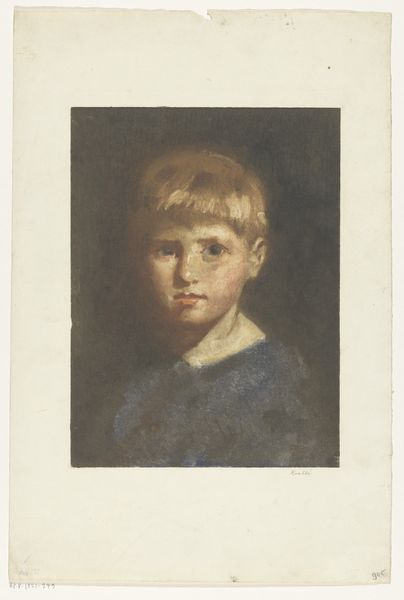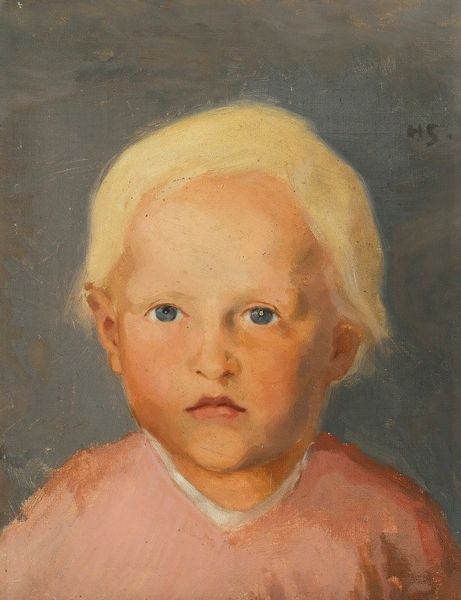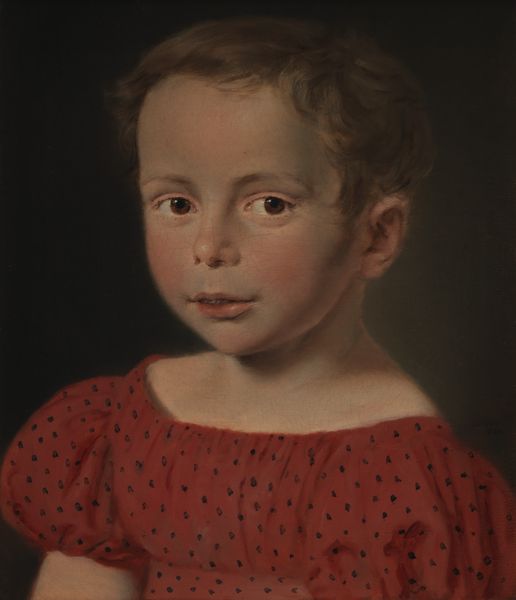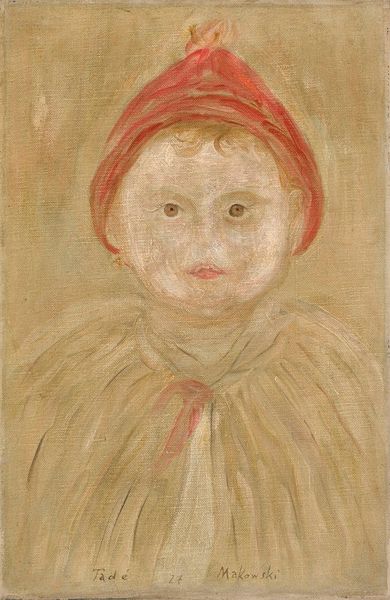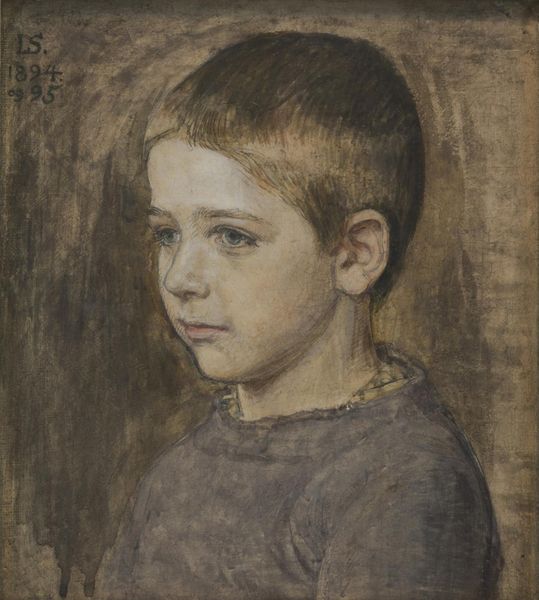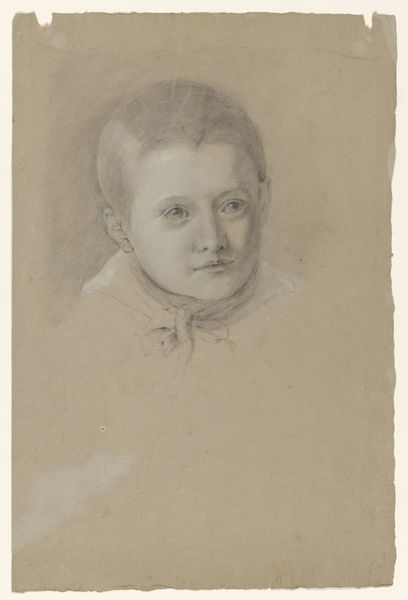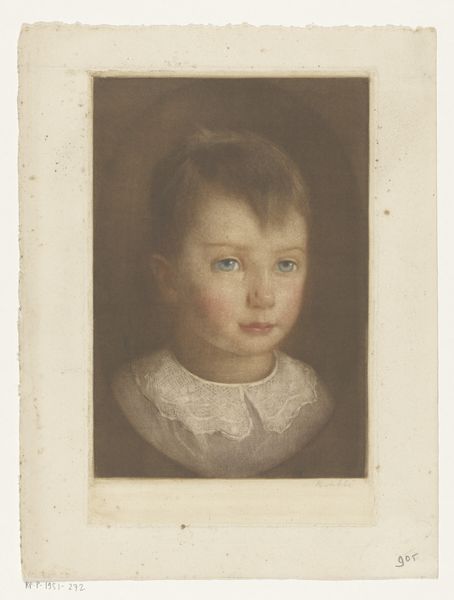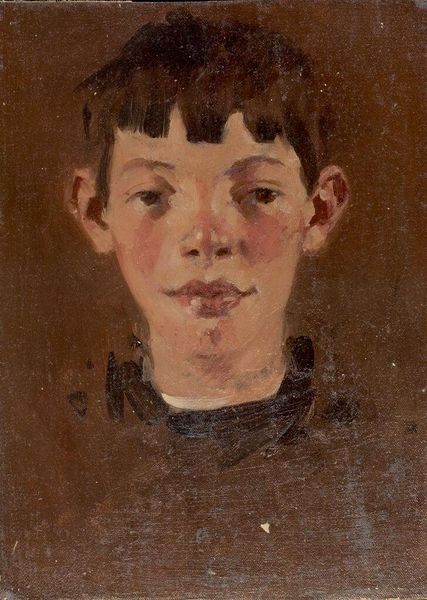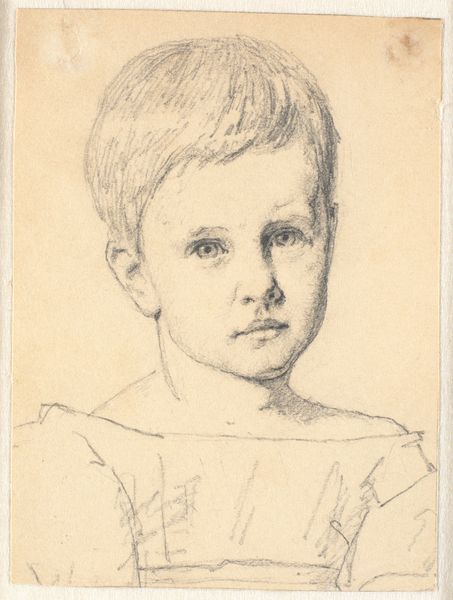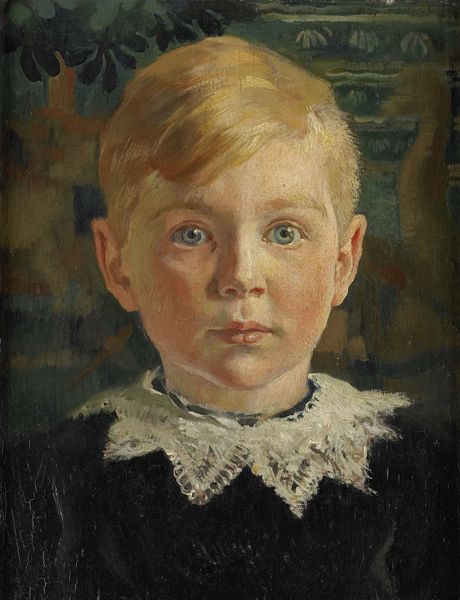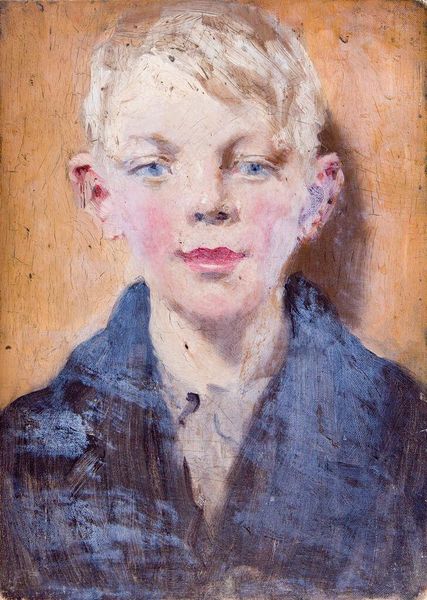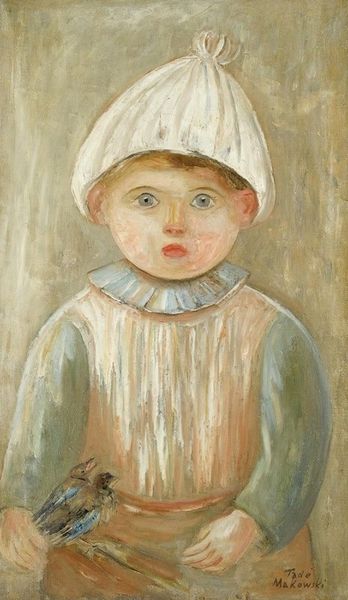
painting, oil-paint
#
portrait
#
painting
#
oil-paint
#
romanticism
#
genre-painting
Dimensions: 21.5 cm (height) x 17.3 cm (width) (Netto)
Curator: This is Christen Købke’s "Portrait of the Artist’s Infant Son Peter," painted with oil paints between 1845 and 1849. It resides here at the SMK, the Statens Museum for Kunst. Editor: There's such a gentle, almost ethereal quality to this portrait. The soft lighting and muted tones create a real sense of innocence, don't you think? A fragile and unsettling innocence? Curator: Absolutely, and it’s important to understand the Romantic era's fascination with childhood, with its perceived purity and vulnerability, also its connection with a natural unspoiled self. Peter is positioned, as a Romantic symbol, and, crucially, viewed by his father: this complicates the gaze and invites, I think, questions around the patriarchy in this representation. Editor: You’re right; and there is the political history. Købke was painting in a Denmark wrestling with national identity. How do you see this playing into his artistic choices here? Did he try to display the boy in any way, perhaps symbolizing certain attributes? Curator: Interesting question! Considering the time, one could certainly argue that the careful observation, a kind of honesty in portraying young Peter is already something of a statement. The subtle brushstrokes of oil paint capture the details of the young boy, a stark focus of a child when Danish art might instead have sought allegorical heroism. Editor: Looking at it now, the simplicity almost feels radical. But what about Peter himself? Was this merely a sentimental exercise for the artist? I am wondering about how he felt, existing, quite literally under his father’s artistic control. Curator: Precisely. By the 1840s, artists, fueled by broader socio-political shifts, were pushing the boundaries of traditional representation, exploring everyday subjects like children not just as generic models of 'purity' but also within this child’s subjectivity. Of course, any claims about his "true" experience, need careful assessment, remembering that this subjectivity is entirely mediated through his father’s authorial perspective. Editor: It's fascinating to see the layering of artistic intention and historical forces in this image of a boy. This invites me to consider modern child portraiture and which agendas prevail within the contemporary gaze. Curator: I agree entirely; art allows us, compels us to see not just the historical and social moment of its making, but to consider, too, ourselves.
Comments
No comments
Be the first to comment and join the conversation on the ultimate creative platform.
